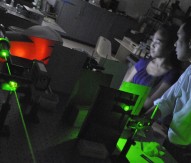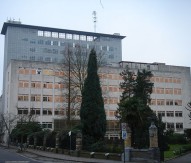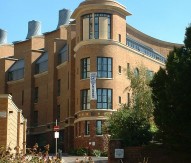
ERC Project develops new OLED molecule
Scientists have shown that a newly-created organic molecule that is shaped like rotelle – wagon-wheel pasta – rather than spaghetti (known as a ‘pi-conjugated spoked-wheel macrocycle’) emits light randomly in all directions, a necessary feature for more efficient LEDs and OLEDs (Organic) Light-Emitting Diodes).
This is a significant development to current OLEDs, in which much of the light is polarised in one direction and thus trapped.
Dr John Lupton, lead author of the study from the University of Utah in the United States who conducted the research with colleagues from the Universities of Regensburg and Bonn, Germany, said: “This work shows it is possible to scramble the polarisation of light from OLEDs and thereby build displays where light doesn’t get trapped inside the OLED.
“We made a molecule that is perfectly symmetrical, and that makes the light it generates perfectly random. It can generate light more efficiently because it is scrambling the polarisation. That holds promise for future OLEDs that would use less electricity and thus increase battery life for phones, and for OLED light bulbs that are more efficient and cheaper to operate.”
OLEDs in smart phones have caught on because they are somewhat more efficient than conventional liquid-crystal displays like those used in the iPhone. That means longer battery life. Samsung has already demonstrated flexible, full-colour OLED displays for future roll-up smart phones.”
According to Lupton, smart phones could produce light more efficiently using molecules that don’t trap as much light.
The large rotelle-shaped molecules also can ‘catch’ other molecules and thus would make effective biological sensors; they also have potential use in solar cells and switches, he adds.
The study, which has been published in the journal Nature Chemistry, was funded by the Volkswagen Foundation, the German Chemical Industry Fund, the David and Lucille Packard Foundation and the European Research Council.






